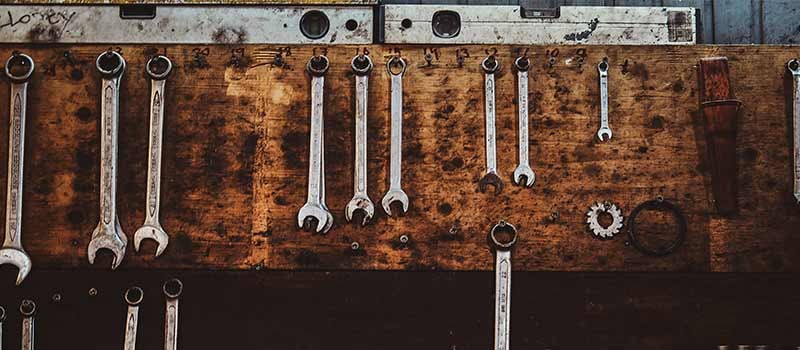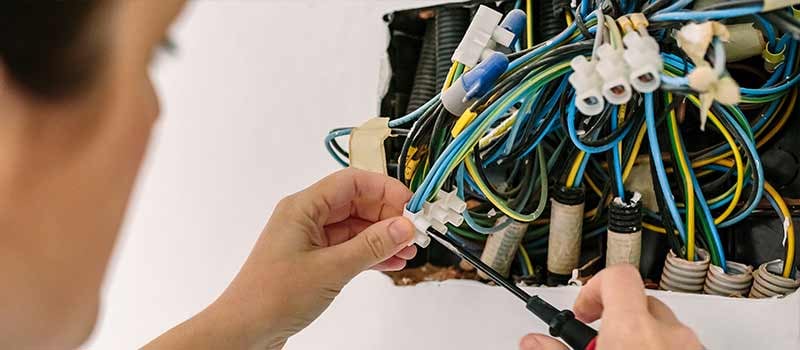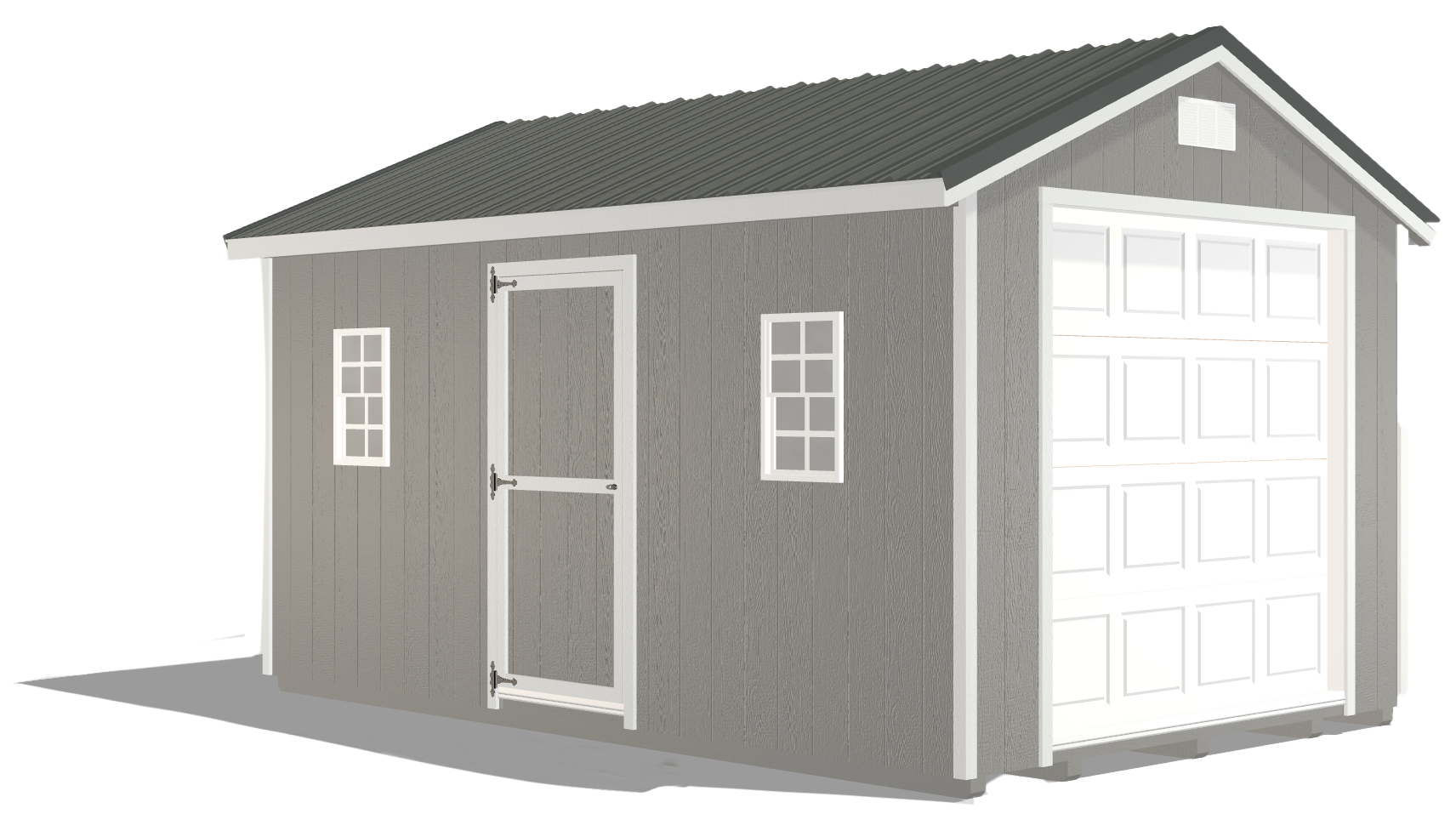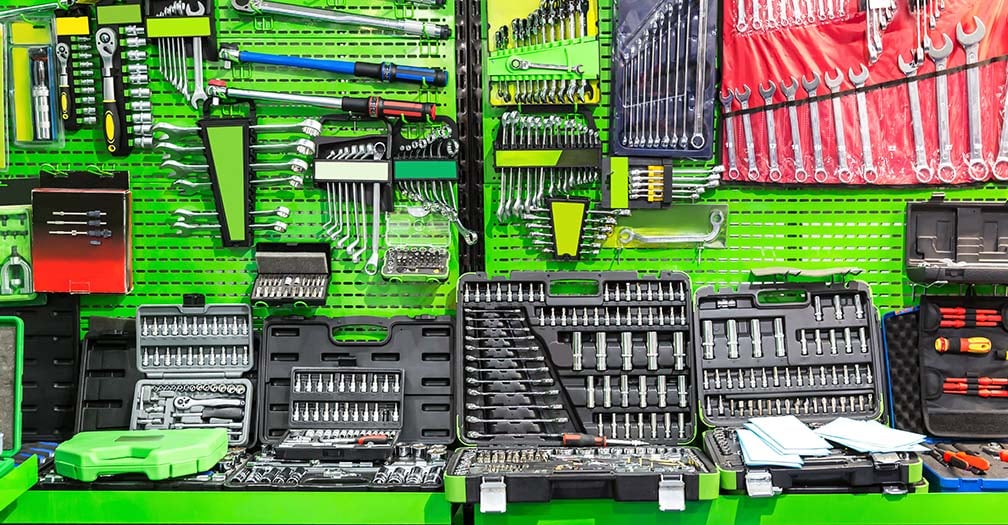How to Get the Most of A Garage Workshop
by Dakota Storage Buildings, on March 23, 2021
Here are some space-saving tips and maintenance ideas to help you get more life out of your beloved workshop.
Garage workshops are the best. They're a place of comfort and productivity. Whether you use your garage for fix-it projects, woodworking, motorcycle maintenance, vehicle storage, tinkering, or whatever, it's your place of solitude. With its use being so versatile, it's definitely collected its share of stuff. From time to time, if you find yourself thinking, "Now where did I put that?" or "I don't have enough room for everything!" — we get it. Being workshop owners ourselves, we understand the frustration.
And having had your workshop for a while, there's no doubt that it has signs of wear and tear. You might have begun noticing that it's not as intact as it used to be. Maybe you even have some safety concerns like wiring, lighting, rotting wood, soft spots in the floor, and so forth.
There will be a day when you'll need to consider undergoing a full-on renovation or even buying a new workshop garage. But for now, we have some space-saving tips and maintenance ideas that will help you get more life out of your beloved workshop.

Garage Workshop Space-Saving Tips
You'll be able to get more and better use of your current space by implementing some space-saving storage tips. From large coolers and heavy-duty storage bins to modular saws and tool carts, here are some ways to keep it all together and neatly organized, freeing up new-found space.
Overhead/loft storage. Utilize wasted space with overhead storage. Store up high items that you use seasonally or infrequently so that valuable square footage is freed up. You can buy a suspended rack kit, mounted shelf, or custom loft. Of course, there’s always the option to build DIY loft storage. No matter your preference, your overhead storage unit should be sturdy and structurally sound.
Workbench storage. There’s a lot you can do to maximize your workbench area, including using wall-mounted swing panels and a pegboard wall or adding shelving and a shelf bin organizer beside your workbench station. Creating a station that is functional and organized will keep things orderly, safe, and easy to find.
Storage systems. For wall and floor storage, we suggest setting up a storage system that could include repurposed bookshelves, DIY shelves, or utility shelves. Metal, wire, or plastic utility shelving are best because they're durable, built to handle moderate weight, and have ventilated shelves that prevent mold and mildew. For more wall storage, consider wall-mounted tool storage racks perfect for handled or hanging tools (think brooms, rakes, shovels) or utilizing the vertical space between wall studs with a kit like the VersaCaddy. Using a variety of storage systems will allow you to maximize your space.
For serious woodworkers, check out this 16'x16' storage shed workshop tour.
Garage Workshop Maintenance Tips
With things in order, be sure to inspect the integrity and safety of your garage. This is the ideal time to identify safety issues besides the ones you've already noticed. There are ways to fix and prevent many of your safety concerns — it’s just a matter of knowing that they exist and taking time to fix them. Here are a few to get you started.

Wiring. Faulty wiring shows some noticeable signs. For example, dimming or flickering lights are signs of faulty wiring. Plus, if you experience frequent blown breakers or fuses, there's a good chance that faulty wiring may be to blame. Other symptoms of faulty wiring include charred or darkened outlets and switches. If this is a problem for you, call an electrician. Updating wiring, ensuring it's grounded, and adding another outlet or two may be your long-term fix. With fire and safety hazards removed, your garage will be a much safer place to work.
Bad floorboards or cracked concrete. There are different flooring types used in garages, but those that tend to have issues over time are wood and concrete. If you have a garage with a concrete floor, there is a good chance that it experienced cracking from expanding, contracting, or spalling within its lifetime. Here's a DIY fix for patching cement floors. Wood flooring has a set of its own issues. Most commonly, wooden planks become loose, warp, buckle, or squeak. To fix wood floor problems, it could be as straightforward as replacing the plank with treated lumber, applying epoxy or resin glue to cracks or splits, or using filler for larger rotten areas. See more here. If you're dealing with rotted sill plates or mudsill, the fix may take an expert with experience.
Poor insulation. Poor or inadequate insulation in your garage can lead to condensation issues due to temperature differences, which leads to the growth of mold and mildew. You can choose to add insulation (fiberglass, cellulose, rigid foam, or spray foam), or it may be enough to seal cracks and crevices. You will benefit the most, however, when you seal and insulate. Garages typically aren't built to be airtight and have lots of air gaps. You can insulate the walls, ceiling, and door of the garage, but if you fail to fill those air gaps, you'll still be wasting a lot of heat and letting in moisture. So before adding insulation, go around the garage with a can of low-expanding spray foam and seal all gaps and cracks.
Unreliable garage door. The overhead door is your garage's heaviest and largest moving part. Whether it's making weird noises, opening unevenly, or closing at a snail's pace — these things can usually be fixed, but sometimes the only real fix is a new garage door. Here are some things you can do quarterly, semiannually, and annually to protect your overhead garage door, keeping it in good working order.
Rot & mold. Over time moisture causes mold to grow and rot to eat away at untreated wood. And being that you spend a lot of time in your workshop, continually breathing in is mold spores can lead to health issues. Sometimes rot, mold, and fungi have a "mildewy" smell to them; other times, they can go undetected. Take time to inspect the wood inside of your garage. Look at your window frames and ceiling for signs of moisture and mold. If you have chronic condensation problems, we have recommendations that will help to prevent it from happening, keeping your workshop safe and your lungs healthy.
Learn how to prevent condensation problems by reading more here.
There's a lot you can do to keep your garage workshop in good working order for a long time. However, if you need to make repairs more frequently than you'd like, it might not be a bad idea to invest in a new garage. But for now, enjoy the time you have by implementing our space-saving tips and maintenance ideas.
About Dakota Storage Buildings
Life is demanding and full of choices. We’d love to make just one aspect of your life a little easier. That’s why it’s our mission to provide storage solutions you can trust, from sheds and garages to coops and kennels. Customize your storage building with our online 3-D configurator, explore our stock buildings, or find a display location near you. Our team is now serving North Dakota, South Dakota, Minnesota, western Wisconsin, northeast Nebraska, and north-central Iowa. Discover The Dakota Difference.


























